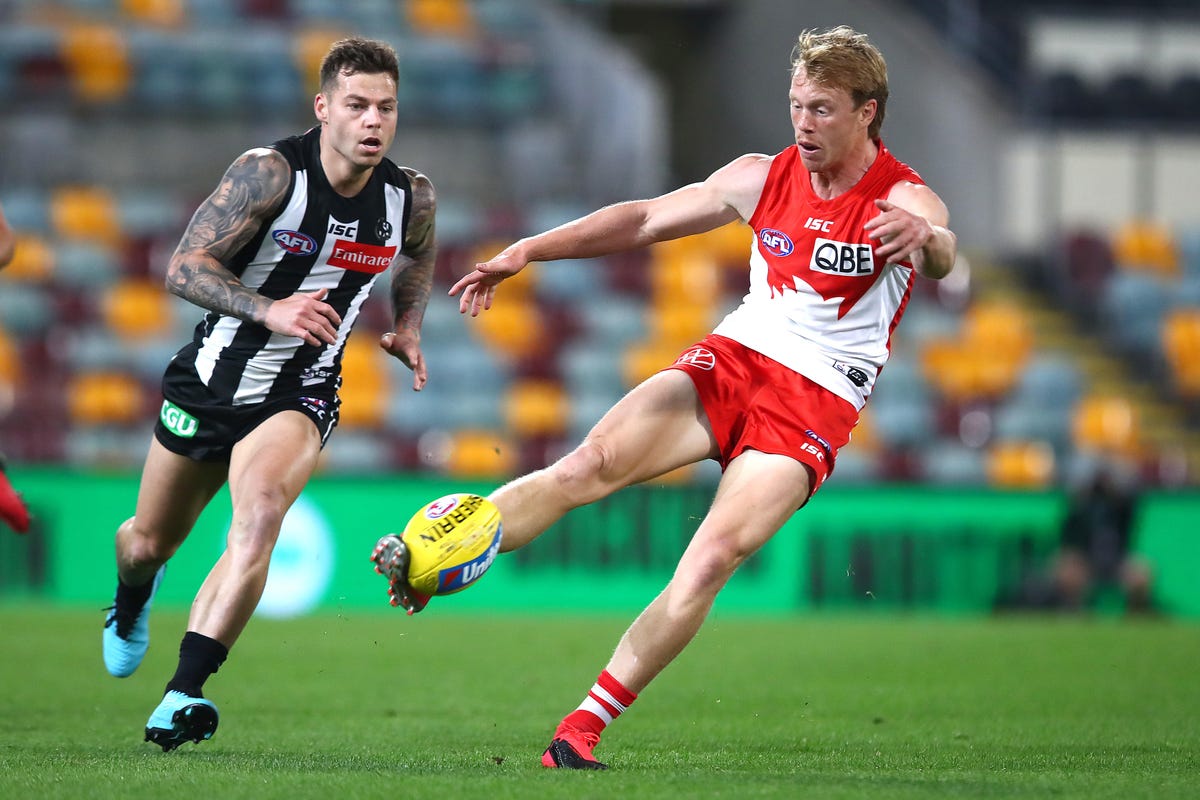
Image: Getty Images
In March 2020, live sports was paused in Australia in response to COVID-19. The winter season had just kicked off two weeks prior and sports streaming platform Kayo had prepared for a six-to-eight-month period of heavy usage and an increase in subscribers.
Just like almost every other business, Kayo had to “pivot” to make the most of the new norm.
“AFL, NRL, Supercars, Formula One — they are all coming on at the same time, and in the lead up to that, we had grown quite steadily with [customer base] around 450,000. This was going to be the next push with the launch that winter code and really start of the next wave of growth,” Kayo CEO Julian Ogrin explained.
“And then, I think it was the 24th of March, it all just stopped. We went from 700 hours of live sport … to absolutely having nothing. I don’t think there was ever a business plan or business case, that factored in sport actually stopping.”
Kayo had to instead focus on replays and driving entertainment from its existing catalogue.
“That was probably a good learning curve for us as well because we actually had to get out of our comfort zone … one of the things we did learn was that even though live sport wasn’t there, our fans were still wanting to consume something,” he said.
As Australia had a decent hold of community COVID transmission, live sport returned, just in a different form with empty stadiums.
“That was, for us, a game changer,” Ogrin said. “There’s no way you would ever prepare for a scenario like this.
“In an empty stadium world, we even had to pivot on things like innovation — crowd noise, and all those sorts of things we had to learn about, because you don’t want to remind people there’s an empty stadium.”
The return of live sports saw a “phenomenal” amount of people subscribed to Kayo. The platform peaked at around 600,000 customers.
As Kayo had the benefit of watching other streaming platforms before launching, it was built on the cloud. Amazon Web Services (AWS) prevented Kayo from dropping the proverbial ball.
Although a streaming site, Ogrin likened his business to selling tickets for a concert, given the bursts of use and the scaling required.
“We see upwards of 30,000 people coming on and signing up … in the lead up to a kick-off or the start of an event,” he said. “So the scale in terms of being able to manage the signup journey, the authentication journey, and to do that all within two-to-three minutes — driving the scale of those transactions, AWS plays a big role in that.
“And then you then get to the video player experience, which has the same scale tension as the sign up because everyone’s turning the video player on at the same time, being able to just light that up from a static position to just going to optimum, peak performance in a space of 60 seconds.”
In April 2021 alone, Kayo delivered more than 25 million hours of sports content.
Kayo is owned by Streamotion, part of the Foxtel Group. The group in 2020 also launched an entertainment service, Binge, which Ogrin said had the benefit of learning from Kayo.
But it isn’t just the hosting of Kayo and Binge where AWS is being leaned on.
Kayo developed a unified data lake on AWS, integrating internal and external sources of data, such as customer behaviour, preferences, and profile information. Using analytics services, including cloud data warehouse Amazon Redshift, serverless data integration service Amazon Glue, and interactive query service Amazon Athena, Kayo analyses information like subscriber content preferences and streaming video performance in real-time to create what Ogrin labelled a unified view of the customer, to assess an individual’s engagement with the streaming platforms’ content, and adjust the content library to deliver a personalised menu of sporting events.
On March 18, Kayo and Binge experienced a peak in demand on its platform with major events, including live AFL and NRL matches and superhero movie Zack Snyder’s Justice League airing simultaneously.
With the support of content delivery network service AWS CloudFront, AWS Elemental Media Live and AWS Elemental Media Package, as well as AWS Elemental Media Tailor, the platform was able to handle more than 350,000 peak concurrent streams hitting more than 6 million hours of content across the four days of the peak.
“It was fascinating to see two businesses … signup journeys, the authentication, the video player, all these things need to absolutely go from zero to fifth gear in seconds and minutes,” Ogrin said. “It went really well, it was the first test to see two verticals going at the same time. I don’t think we’ll see that too often, but it was the ultimate test and it really stood up.”
RELATED COVERAGE
Stay connected with us on social media platform for instant update click here to join our Twitter, & Facebook
We are now on Telegram. Click here to join our channel (@TechiUpdate) and stay updated with the latest Technology headlines.
For all the latest Technology News Click Here
For the latest news and updates, follow us on Google News.
